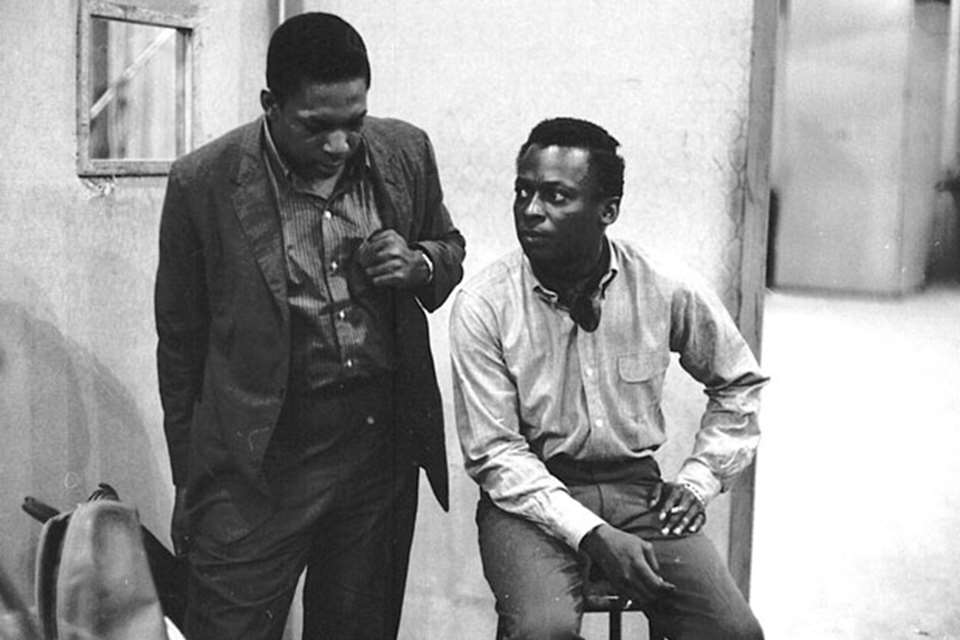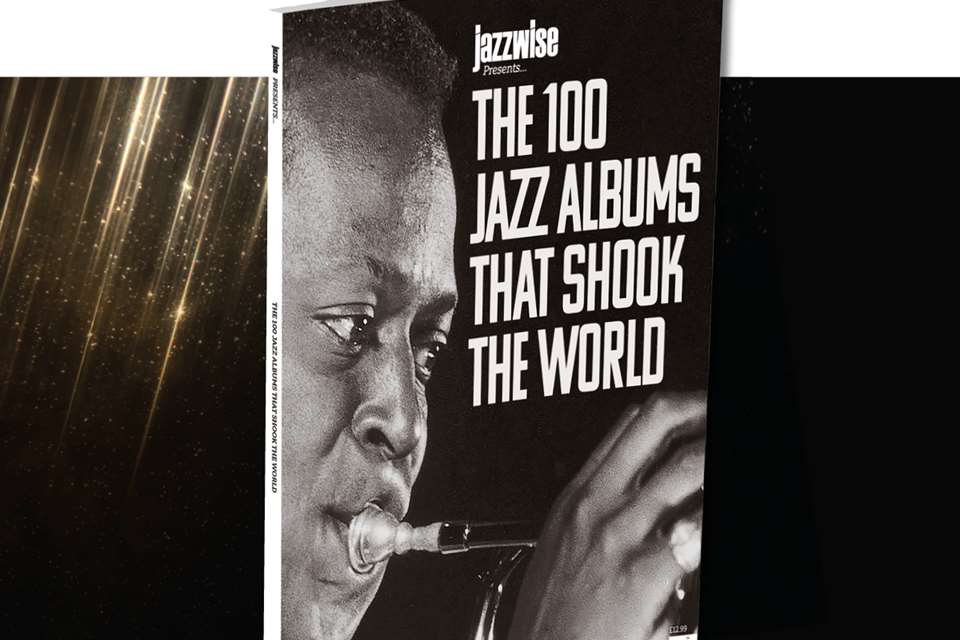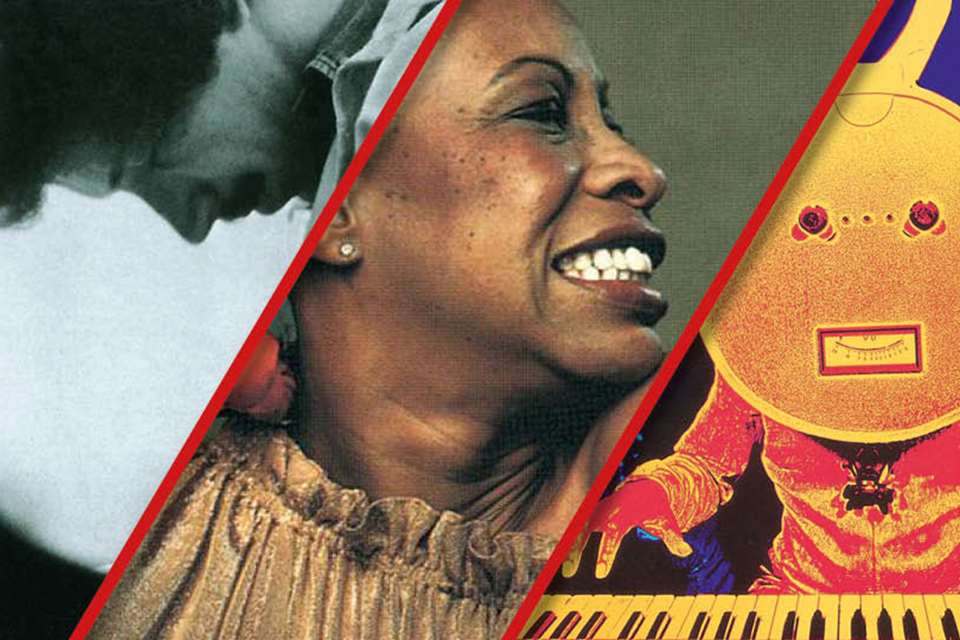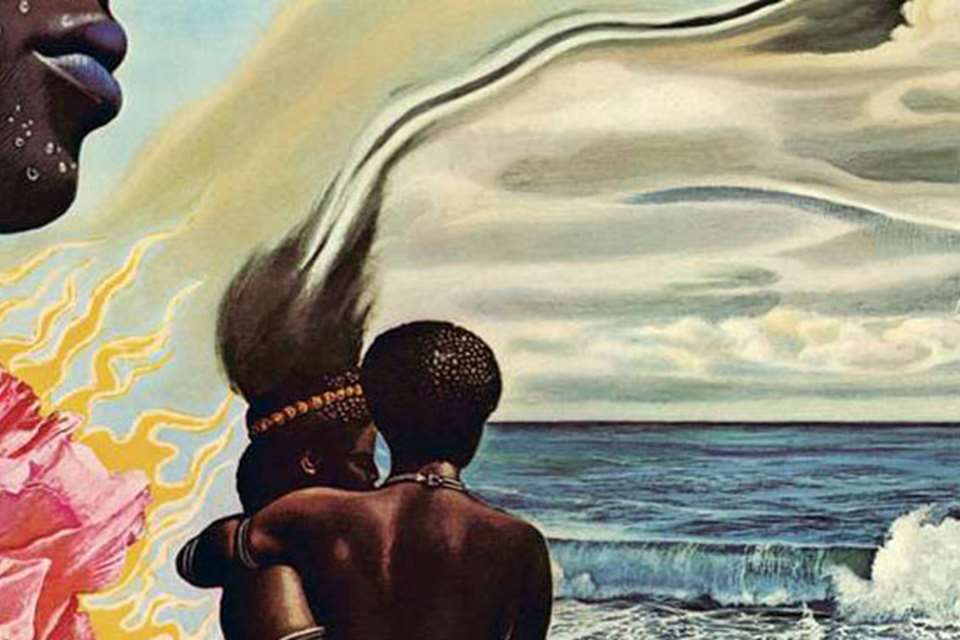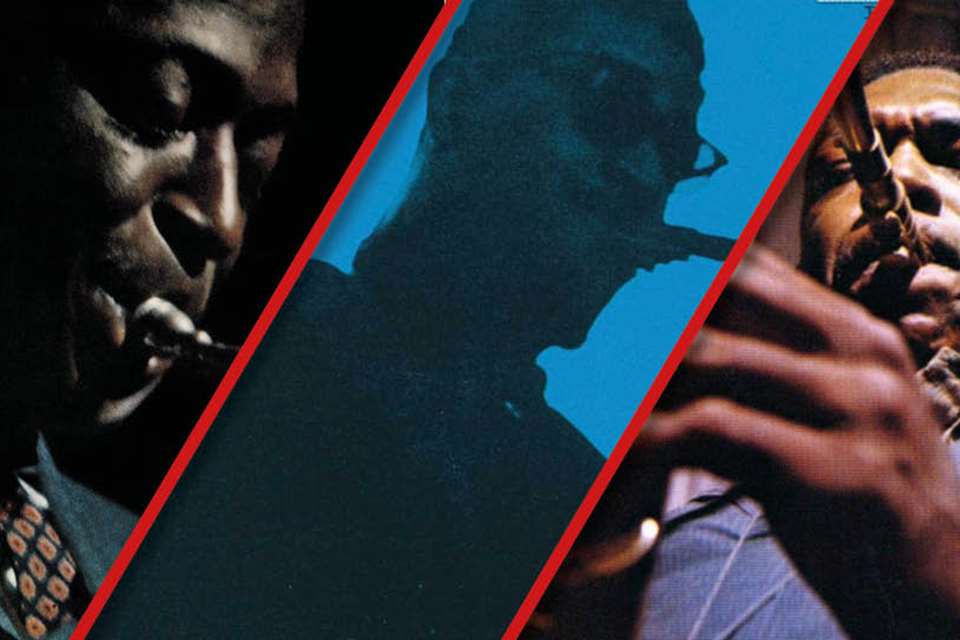John Coltrane: In the Temple of Trane
Stuart Nicholson
Tuesday, October 19, 2021
Such was John Coltrane's desire to play the unplayable he would at times take the sax from his mouth and begin to chant and sing over the band. Stuart Nicholson looks at events in both Trane’s life, and society at large, which ultimately helped shape a seething soundtrack to this most turbulent of times

In 1966, the United States was in turmoil with race riots in most large cities, Civil Rights protests, anti-war demonstrations, the rise of the counter-culture and sexual liberation. In jazz, the rise of free jazz – inextricably linked to the social climate from which it emerged – was for many the anthem that screamed rejection of racial inequality. Like American society at this time, saxophonist John Coltrane’s music was also in flux, his growing involvement with the avant-garde, or New Thing, sparking the defection of long serving sidemen while provoking an angry debate among his followers about his musical direction that has continued to this day. As journalist Stanley Crouch has written: “By 1966, Coltrane was not only having trouble in clubs, sometimes being fired on opening night, he could empty an entire park, which, as Rashied Ali recalls, he did in Chicago. During the performance and others witnessed in New York, Coltrane put down the saxophone and started shouting, yodelling and screaming through the microphone while beating on his chest.”
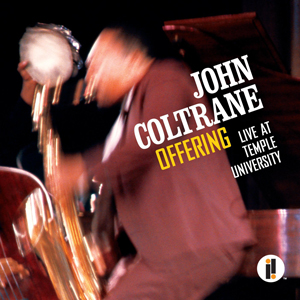 Until now, the story of Coltrane casting aside his saxophone and “shouting, yodelling and screaming” has been part of the apocrypha surrounding his final months, portrayed as the existential angst of an artist whose time was running out and could no longer express all he wanted to say through his horn. In an interview in The Sixties, a collection of interviews edited by Lynda Rosen Obst, Rashied Ali, Coltrane’s drummer at the time, described Coltrane’s thinking: “He was studying Buddha sometime near the last gig and found that there was a chant where you could pound your chest and it would change the sound of your voice. He wanted to get that quiver on the horn, and when he couldn’t get it, he’d put the horn down, beat on his chest and scream into the microphone. People really thought he’d lost his mind then.”
Until now, the story of Coltrane casting aside his saxophone and “shouting, yodelling and screaming” has been part of the apocrypha surrounding his final months, portrayed as the existential angst of an artist whose time was running out and could no longer express all he wanted to say through his horn. In an interview in The Sixties, a collection of interviews edited by Lynda Rosen Obst, Rashied Ali, Coltrane’s drummer at the time, described Coltrane’s thinking: “He was studying Buddha sometime near the last gig and found that there was a chant where you could pound your chest and it would change the sound of your voice. He wanted to get that quiver on the horn, and when he couldn’t get it, he’d put the horn down, beat on his chest and scream into the microphone. People really thought he’d lost his mind then.”
With the release of John Coltrane – Offering: Live at Temple University (Resonance), recorded on 11 November 1966, we have Coltrane vocalising as Ali describes on the compositions ‘Leo’ and ‘My Favorite Things’ that underline the importance of this newly discovered material. Where The Olatunji Concert: The Last Live Recording – recorded 23 April 1967 – is equivocal, muddy and indistinct, Offering is unequivocal, powerful and hard-hitting, providing a valuable insight into the nature and direction of Coltrane’s music at a crucial period in his life. What emerges is a remarkable spirituality, the connectedness of Coltrane’s chanting to the totality of his music purview and the lucidity of his playing. If these recordings bear witness to the dramatic times in which they were recorded, then the music reflects the drama being acted out in American society itself.
In 1964, president Lyndon Johnson and Secretary of Defence Robert McNamara fabricated an incident in the Gulf of Tonkin to provide the pretext for escalating American involvement in the Vietnam War. By 1966, in the face of military draft to fight a war whose objectives were unclear, a rising body count, and the certainty of victory appearing more and more remote, student protest and unrest were spreading like wildfire through college campuses across the United States. Convinced communist agitators were behind the unrest, an increasingly beleaguered president ordered the CIA and the FBI to begin a massive surveillance and information gathering effort against anti-war activists.
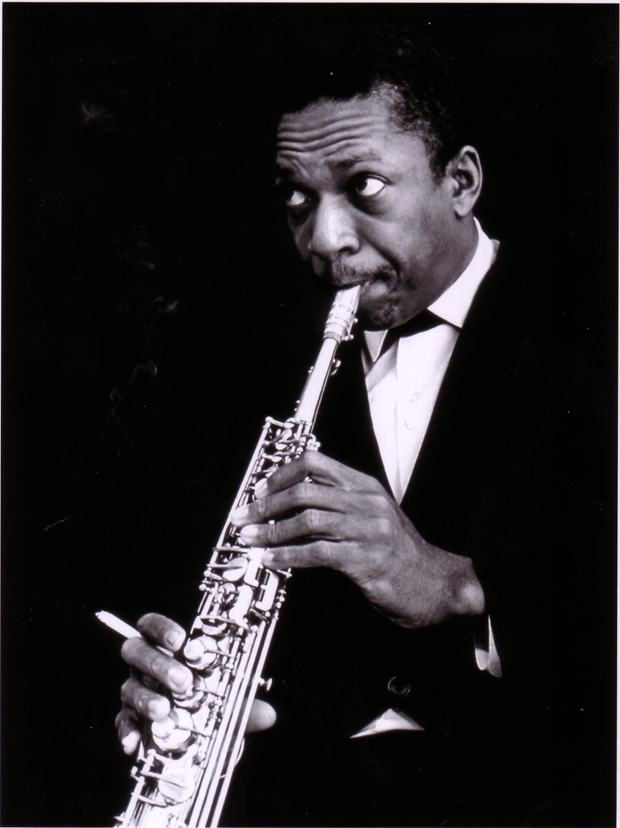 Codenamed Operation CHAOS, top of the FBI’s list of targets was Nobel Peace campaigner Dr. Martin Luther King, who had labelled the United States government, “The greatest purveyor of violence in the world today.” Three years prior to Offering, in 1963, King had helped organise the March on Washington where he galvanised the world with his famous ‘I Have a Dream’ speech. But King’s peaceful struggle was being played out against a background of inner city rioting, the Watts riot in August 1965 shattering American quiescence as fires burned and blood flowed in the streets.
Codenamed Operation CHAOS, top of the FBI’s list of targets was Nobel Peace campaigner Dr. Martin Luther King, who had labelled the United States government, “The greatest purveyor of violence in the world today.” Three years prior to Offering, in 1963, King had helped organise the March on Washington where he galvanised the world with his famous ‘I Have a Dream’ speech. But King’s peaceful struggle was being played out against a background of inner city rioting, the Watts riot in August 1965 shattering American quiescence as fires burned and blood flowed in the streets.
Socially, religiously and culturally aware, the traumatic events in American society seemed to be playing out in Coltrane’s music. In an August 1966 interview with Frank Kofsky, Coltrane observed, “I think that music, being an expression of the human heart, or of the human, of being itself, does express what is happening.” After attending a Malcolm X meeting and left “quite impressed,” Coltrane was asked whether the kind of social and political issues Malcolm X talked about were expressed in his music, and whether he thought they were important. “Well they’re definitely important,” Coltrane responded, “and as I said, the issues are part of what is, you know, at this time. So naturally as musicians, we express whatever, whatever it is.”
As 1964 gave way to 1965, the members of Coltrane’s classic quartet – McCoy Tyner, Jimmy Garrison and Elvin Jones – found themselves witness to their leader’s deepening engagement with the ‘New Thing’. When Coltrane recorded his classic A Love Supreme in December 1964, he also recorded a further version of ‘Acknowledgement’ adding New Thing saxophonist Archie Shepp and bassist Art Davis. It was not released for some 40 years, suggesting Coltrane’s music was already in transition, even though the organic unity of the ‘A Love Supreme’ suite in its released form suggests otherwise. Coltrane’s thinking became clear with the album appropriately named Transition, recorded on 10 and 16 June 1965 that, while including ‘Suite’, in obvious continuum of his religious preoccupations, suggested in its totality – ‘Transition’, ‘Welcome’, ‘Suite’ and ‘Vigil’ – a gathering of forces that presaged his major work Ascension, recorded on 28 June 1965, barely two weeks later. This recording marked the beginning of what has become known as ‘Late period Coltrane’, portrayed as a rupture with the past and the beginning of the saxophonist’s musical roller-coaster ride into eternity.
While the multi-throated roar of Ascension writ large the change in Coltrane’s music, what actually followed was a period of gradual transition that, although the energy and the drama of his music might suggest otherwise, was marked by cautious and careful rationality. New Thing at Newport: John Coltrane/Archie Shepp, recorded on 2 July 1965 at the Newport Jazz Festival, might have been an unequivocal announcement of his alignment with the New Thing, but Coltrane’s set was with his classic quartet, although his powerfully expressive foray into the altissimo range and free interlude on ‘One Down, One Up’ was a portent of things to come. Shepp, who played a set with his own group would later that summer sit-in with Coltrane’s group at the Down Beat festival in Chicago.
As long, powerful and increasingly abstract as his solos were becoming, Coltrane had achieved such international recognition that by now he was outselling the rest of the Impulse! catalogue put together. Perhaps the financial rewards of success allowed him to experiment by introducing New Thing players into the ranks of the classic quartet – after a week in Indianapolis as a quartet in early September, Pharoah Sanders and Donald Rafael Garrett were added to the group for their performance in San Francisco and appear on Live in Seattle from 30 September that year.
From Seattle, Coltrane moved to Los Angeles adding drummer Frank Butler, where the sound level, according to Downbeat, “was to say the least, intense.” When asked by the magazine if this was permanent, Coltrane said it was purely experimental, “I just wanted to see how it would work out, I may try it again later.” When he returned to New York in October, Sanders, Garrett and Butler were among the musicians on the tracks ‘Kulu Se Mama’ and ‘Selflessness’, while Butler is absent on what Coltrane scholar David Wild called the “acid-etched” ‘Om’.
“Lewis Porter has pointed out that Coltrane had dabbled with LSD while Miles Davis went further, claiming it was what killed him”
Although it seldom forms part of Coltrane discourse, Coltrane’s biographer Lewis Porter has pointed out that Coltrane had dabbled with LSD while Miles Davis went further, claiming it was what killed him. Somewhere between these two opposing poles lies a truth we will never know, but suffice to say in the worlds of rock and jazz, on both sides of the Atlantic, the ready availability of LSD to both musicians and fans was a fact of life. Tripping on acid had made thinking the unthinkable commonplace and popular culture was awash with new ideas and unusual connections in music, design, light shows, literature and more presenting another context in which to consider an acoustic group creating the energy of an electric rock group or combining jazz and Indian music or combining jazz with Buddhist chants.
In November 1965, the quartet’s appearance at the Village Gate was with the addition of Sanders, Shepp, altoist Carlos Ward and drummer Rashied Ali. The evening was described by Downbeat with characteristic understatement as: “Trane + 7 = A Wild Night at the Gate,” reporting that “One simply couldn’t hear anything but drums on ‘Out Of This World’. I had no idea what the soloists were saying and I doubt the players could hear each other… at one point I saw Coltrane break out a bagpipe and blow into it, but damned if I heard a note of what he played.”
On 23 November 1965, it would be just Pharoah Sanders and drummer Rashied Ali who would join the quartet on Meditations, a recording that, as Coltrane himself pointed out at the time, was “an extension of A Love Supreme since my conception of that force keeps changing shape.” The album provides a useful yardstick with which to measure the distance his music had travelled from A Love Supreme, recorded virtually a year earlier.
Although Coltrane featured on the 30 December 1965 cover of Downbeat celebrating “The Year of John Coltrane” and his success in the 30th Annual Reader’s Poll, the comings and goings within the classic quartet had not been met with unalloyed joy by McCoy Tyner and Elvin Jones. The latter was offended because he considered his ability was being doubted by having another drummer playing alongside him and the former simply complained he could not hear himself playing, leaving in late 1965. When Jones handed in his resignation in January 1966 he cited the same reasons. Shortly afterwards, Sun Ra claimed that Coltrane hired Rashied Ali as a means of driving Tyner and Jones out, and when this was put to Coltrane in 1966 he said, “I was trying to do something. There was – I was trying to do something. Please… there was a thing I wanted to do in the music, see, and I figured I could do two things: I could have a band that played like the way we used to play, and a band that was going in the direction that this, the one I have now is going in – I could combine these two, with these, you know, with these two concepts going. And it could have been done.”
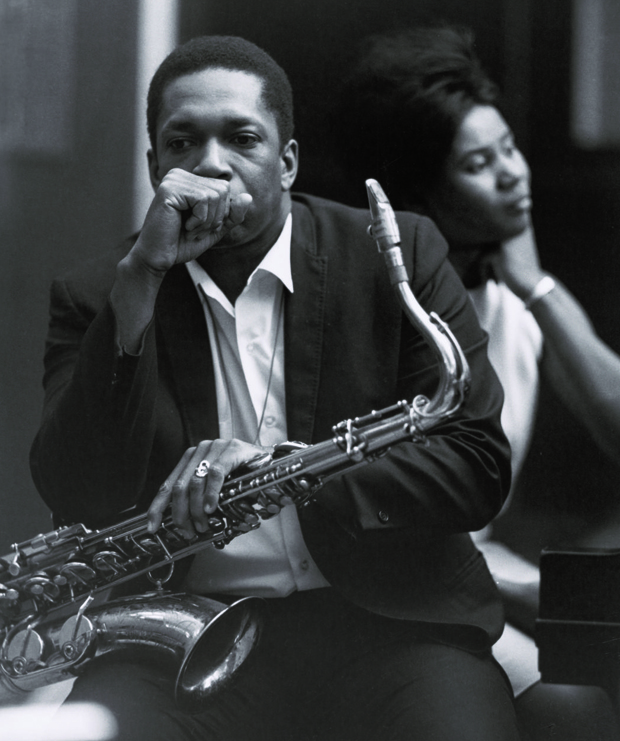 Clearly, playing both ends against the middle did not work, and Coltrane immediately immersed himself in his new musical direction including revising his approach to the saxophone by using the higher registers of his tenor saxophone more, changing his vibrato and seeking greater freedom in tonality. With Tyner gone he turned to his wife Alice Coltrane (neé McLeod), who had been a student of Bud Powell and had previously worked in the bands of Kenny Burrell, Johnny Griffin, Lucky Thompson and Yusef Lateef. In 1962 she had auditioned for vibist Terry Gibbs’ group, “Right from the introduction Alice played on the first song, I knew she was something else,” recalled Gibbs in 2003. “She sounded like Bud Powell. She played chorus after chorus and every note was a gem…so now I had a good quartet!” In 1963 they recorded Terry Gibbs Plays Jewish Melodies in Jazz Time together, “Alice actually stole that date from me,” recalled Gibbs. However, when his band played opposite the John Coltrane Quartet in Birdland, events took an unexpected turn that lead to him losing his star player. “When I first introduced Alice to John, I immediately saw a puppy love romance starting,” said Gibbs. “There was a back booth in Birdland where the musicians could sit and every time we got off the stage, Alice would be there, just staring at John while he played. I think she was falling in love with him.” John Coltrane and Alice McLeod married in 1965 and in 1966 she replaced Tyner’s quartile approach to harmony with a freer accompaniment, which was echoed by Elvin Jones’ replacement Rashied Ali, whose drumming style Coltrane once dubbed “multi-directional.” With Tyner and Jones, Coltrane’s performances had been long; with his new group they became even longer as Live at the Village Vanguard Again (recorded 28 May 1966) or John Coltrane Live in Japan (recorded July 1966) reveal — for example, the 57min 19 secs performance of ‘My Favorite Things’ recorded at the Sankei Hall in Tokyo.
Clearly, playing both ends against the middle did not work, and Coltrane immediately immersed himself in his new musical direction including revising his approach to the saxophone by using the higher registers of his tenor saxophone more, changing his vibrato and seeking greater freedom in tonality. With Tyner gone he turned to his wife Alice Coltrane (neé McLeod), who had been a student of Bud Powell and had previously worked in the bands of Kenny Burrell, Johnny Griffin, Lucky Thompson and Yusef Lateef. In 1962 she had auditioned for vibist Terry Gibbs’ group, “Right from the introduction Alice played on the first song, I knew she was something else,” recalled Gibbs in 2003. “She sounded like Bud Powell. She played chorus after chorus and every note was a gem…so now I had a good quartet!” In 1963 they recorded Terry Gibbs Plays Jewish Melodies in Jazz Time together, “Alice actually stole that date from me,” recalled Gibbs. However, when his band played opposite the John Coltrane Quartet in Birdland, events took an unexpected turn that lead to him losing his star player. “When I first introduced Alice to John, I immediately saw a puppy love romance starting,” said Gibbs. “There was a back booth in Birdland where the musicians could sit and every time we got off the stage, Alice would be there, just staring at John while he played. I think she was falling in love with him.” John Coltrane and Alice McLeod married in 1965 and in 1966 she replaced Tyner’s quartile approach to harmony with a freer accompaniment, which was echoed by Elvin Jones’ replacement Rashied Ali, whose drumming style Coltrane once dubbed “multi-directional.” With Tyner and Jones, Coltrane’s performances had been long; with his new group they became even longer as Live at the Village Vanguard Again (recorded 28 May 1966) or John Coltrane Live in Japan (recorded July 1966) reveal — for example, the 57min 19 secs performance of ‘My Favorite Things’ recorded at the Sankei Hall in Tokyo.
Although Coltrane’s live performances were becoming increasingly outward bound, he did not cut links with his past completely – for example, ‘My Favorite Things’ remained with him until his last live recording in April 1967. As Coltrane expert Ashley Kahn observes, “what Coltrane was diving into at the end of his career, a lot of ideas and devices and advancements that he had made since the 1950s were still being worked into what he was doing — his approach to the instrument, his phrasing, the harmony ideas — he never really discarded that stuff, it’s just that people miss the fact there is an incredible depth to everything he did.”
While it is true that the New Thing had its share of noise makers, performers who came and went, now long forgotten and who failed to make their mark on the ledger, for some it has been tempting to bracket Coltrane’s “final period” with the work of these lesser artists. “There is an interesting Cannonball interview where he discusses exactly that thing,” continues Kahn. “He goes, ‘I am not against the avant-garde, I am against players who don’t know what they are doing and getting by calling themselves avant-gardists or free jazz musicians or the New Thing. Even within the music, there is a hierarchy of players who are making a statement and coming from something and those who aren’t,’ and being the diplomat he doesn’t say which ones are which!”
Certainly energy and intensity were important ingredients in what Coltrane was doing at this time, figuring highly in his musical conception. “Energy. Yeah, I like to have this energy,” he said in 1966. “There’s always got to be somebody with a lot of power, you see, because Elvin [Jones], in the old band, Elvin had this power, I always have to have somebody with it, you know? Rashied has it, but it hasn’t quite unfolded completely.”
In 1966, drummer Jack DeJohnette played with Coltrane for two weeks at the Plugged Nickel in Chicago: “Mentally, spiritually it was one of the most challenging gigs I did,” he said. Coltrane had previously allowed him to sit-in with his classic quartet when he was in high school, but the band with Alice Coltrane, Pharoah Sanders, Jimmy Garrison and Rashied Ali was a different proposition altogether,” he recalled. “I realised on an energy level how amazing John was, so I was relieved that I had developed as a drummer to hold my own, because we had two drummers in that.”
Yet whatever misgivings Coltrane may have expressed about Rashied Ali, they were apparently resolved by 22 February 1967, when he recorded an album of duets with Ali that were finally released in 1974 as Interstellar Space. Conceptually ahead of its time, Coltrane displays motivic development and moments of melodic lucidity in many places giving the album a structural unity sometimes absent in free music endeavours, and in the 1990s, echoes of this album could be heard resonating in the playing of robust players such as David S. Ware and Charles Gayle.
A week earlier he had been in the same Rudy Van Gelder studios with a quartet comprising his wife Alice, Jimmy Garrison and Ali in an album of contrasting calm called Stellar Regions that was not released until 1995, and Expression (which also included compositions from 7 March) that was released in 1967, after Coltrane’s death on 17 July. The liner notes to Expression refer to the material being taken from Coltrane’s ‘last recording sessions,’ and although not intended as a memorial album it seemed that way from the cover art.
The remarkable album Offering, recorded live at Temple University on 11 November 1966, fits into the continuum of this work while simultaneously illuminating it. It has an aspiring New Thing saxophonist Steve Knoblauch, not destined to be a musician but ending up in a career in community mental health, drifting on stage and soloing on ‘My Favorite Things’ with de rigueur shrieks and honks fashionable at the time, and alto saxophonist Arnold Joyner who although uninvited plays a five minute solo on ‘Crescent’. Coltrane’s passion for rhythmic energy is reflected in percussion section of Umar Ali, Robert Kenyatta and Charles Brown on congas and Angie DeWitt on bata drum, that add both density and diversity to the music, reflective of the influence of an “imagined” and idealised African and Afro culture that was given currency by the black nationalists. The presence of tenor saxophonist Pharoah Sanders was an acknowledgement by Coltrane that in his quest for intensity and energy, even his remarkable physical constitution may flag, “I find that physically, the pace I have been leading has been so hard,” he said, adding later, “I like to have somebody there in case I just don’t, can’t get that strength. I like to have that strength in the band, from someone. And Pharoah is very strong in spirit and will.”
In the audience that night was a young Michael Brecker, who attributes the concert and Coltrane’s remarkable playing to giving him his life’s mission, and the young student Francis Davis, who would be similarly inspired to become a jazz writer. But perhaps revealing of the cathartic effect of this concert was how, after Coltrane concluded with ‘My Favorite Things’, the Radio WRTI broadcast of the event continued, featuring a conversation on air between the two students who had mounted the concert, and although not included on the two CD set, Ashley Kahn explains: “The post-show commentary by these two college kids was really special. Basically they knew something really, really important had just happened, they can’t describe it, they’re not jazz critics or music critics, they’re college students and they’re trying to explain the effect it had on them and they are just kinda lost for words, and I think that’s the most important thing about this, the whole idea of Coltrane bringing to each performance the idea that this is a very special spiritual moment that he’s going to share, and that is what comes through on this concert – and by chance it is Temple University and the name of the album is Offering, so it all ties together.”
This article originally appeared in the September 2014 issue of Jazzwise. Never miss an issue of Jazzwise magazine – subscribe today
